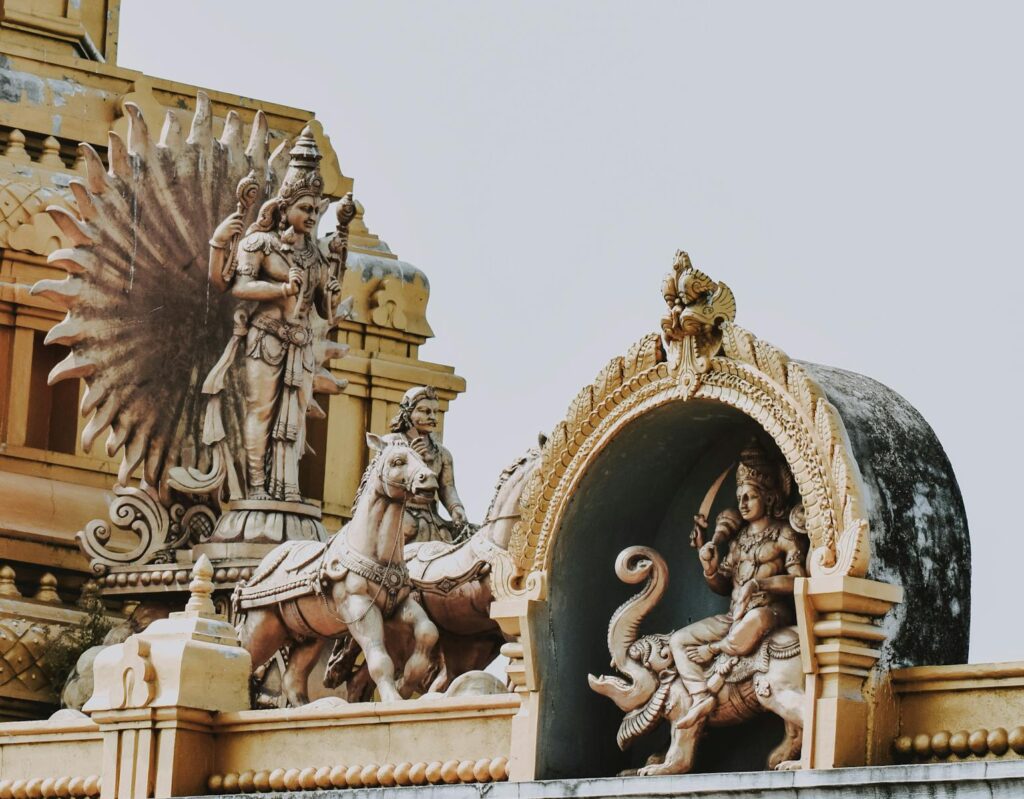In the tapestry of Hindu mythology, few creatures hold as much mystical significance as the sacred white horse. These divine equines gallop through ancient texts, temple art, and cultural traditions, carrying profound symbolic weight that has endured for millennia. Representing purity, power, and transcendence, they bridge the earthly realm and the divine. From the magnificent seven-headed Uchchaihshravas, born from the churning of the cosmic ocean, to Kalki’s apocalyptic mount, the sacred white horses of Hindu tradition embody both cosmic order and spiritual transformation. This exploration delves into their rich symbolic heritage, cultural significance, and enduring presence in Hindu consciousness.
Origins of the Sacred White Horse in Hindu Cosmology
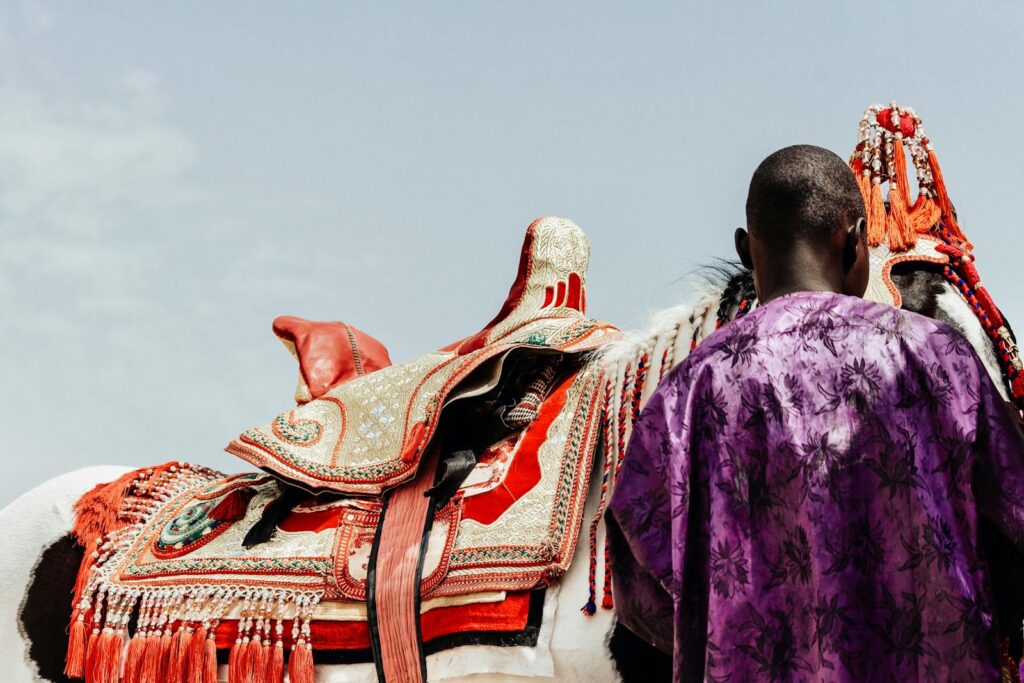
The concept of the divine white horse in Hindu mythology can be traced back to the earliest Vedic texts, where horses were revered as symbols of strength, speed, and cosmic power. In the Rigveda, composed around 1500 BCE, horses frequently appear in hymns dedicated to deities associated with the sun, wind, and celestial movement. The archetype of the sacred white horse is most dramatically portrayed in the Samudra Manthan (Churning of the Cosmic Ocean) narrative, where Uchchaihshravas, the seven-headed white horse, emerges as one of the fourteen treasures. This primordial event establishes the white horse as a being of divine origin, directly linked to the creation of the cosmos and the balance of universal forces. Its pure white coloration specifically ties it to concepts of purity, truth, and transcendence beyond ordinary existence.
Uchchaihshravas: The Seven-Headed Celestial Steed
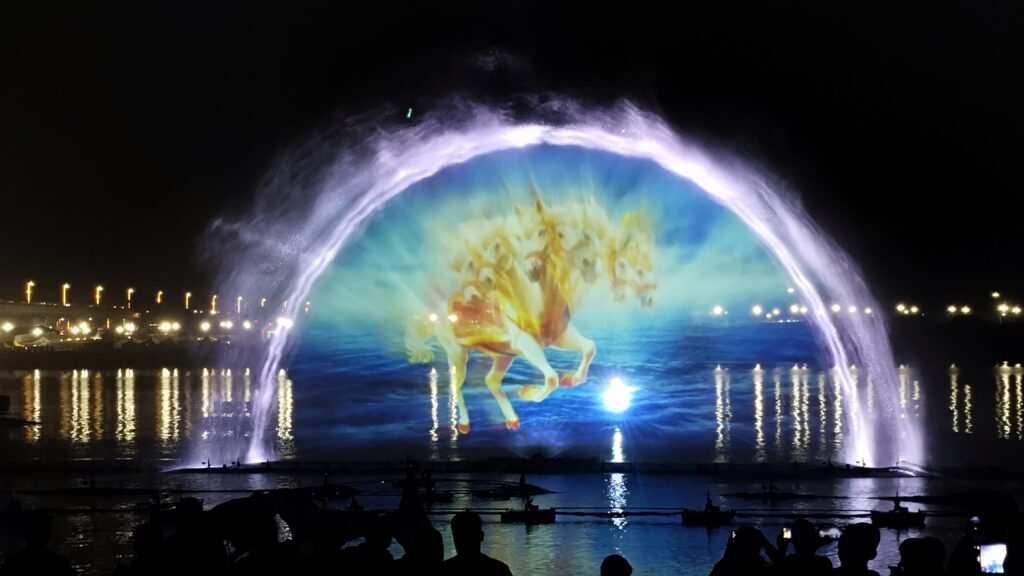
Among the pantheon of sacred horses, Uchchaihshravas reigns as the archetypal divine equine in Hindu mythology. Born from the churning of the cosmic ocean, this magnificent seven-headed white horse became the mount of Indra, king of the devas. The name “Uchchaihshravas” translates to “he who neighs loudly” or “he whose neighing is heard from the highest heavens,” suggesting a voice that transcends cosmic boundaries. His seven heads are often interpreted as representing either the seven islands (dvipas) of the ancient Hindu cosmological model or the seven chakras in yogic tradition. Uchchaihshravas embodies perfection in equine form, symbolizing immortality, supernatural wisdom, and the ability to travel between realms. In some traditions, ritual drinking vessels fashioned in his likeness served as symbols of soma, the sacred elixir of immortality and divine nourishment.
The White Horse of Surya: Chariot of the Sun God
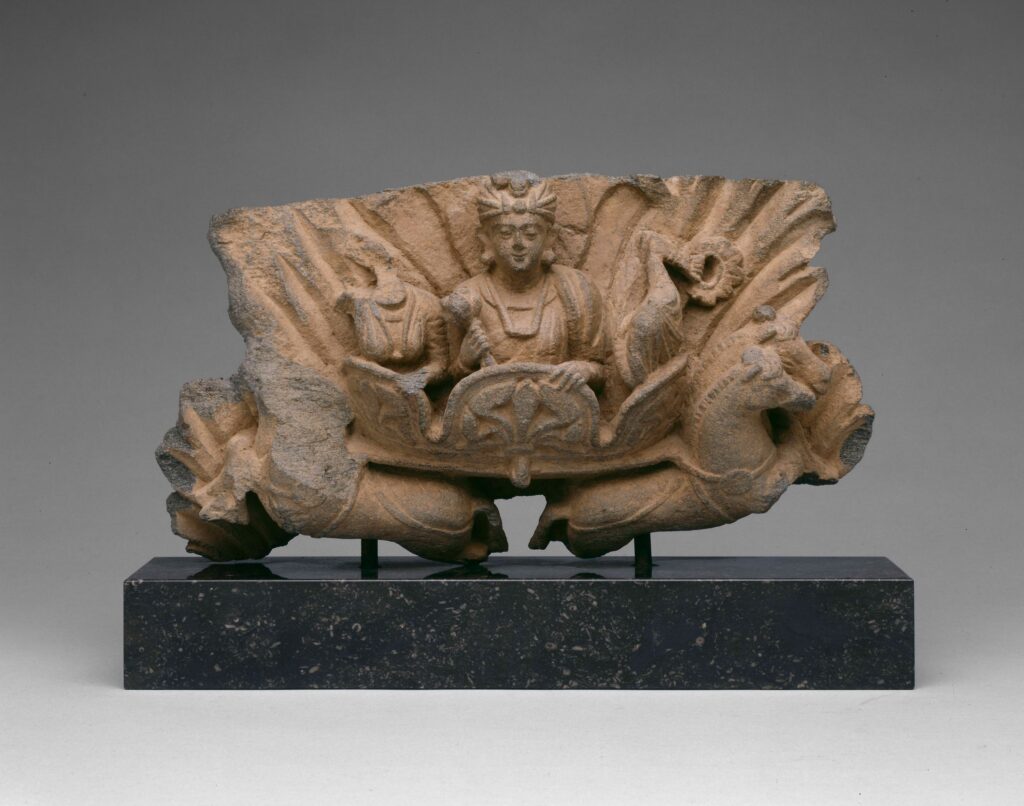
Surya, the Hindu sun deity, traverses the sky each day in a magnificent golden chariot drawn by seven white horses. These celestial steeds, sometimes named Aruna, Gayatri, Brihadratha, Nanda, Hamsa, Yaju, and Atharva, represent both the seven days of the week and the seven colors of the solar spectrum. Unlike ordinary horses, these divine beings never tire as they pull the sun from east to west, sustaining cosmic order and the progression of time itself. The white coloration of Surya’s horses symbolizes the pure, untainted light of divine knowledge that the sun god bestows upon the world. In temple iconography, they are often depicted with elaborate ornamentation, their flowing manes resembling rays of sunlight, embodying both immense power and perfect discipline. Images of Surya’s chariot horses appear extensively in temple architecture across India, serving as enduring reminders of the daily divine miracle of sunrise and sunset.
Kalki’s White Horse: Herald of the Apocalypse
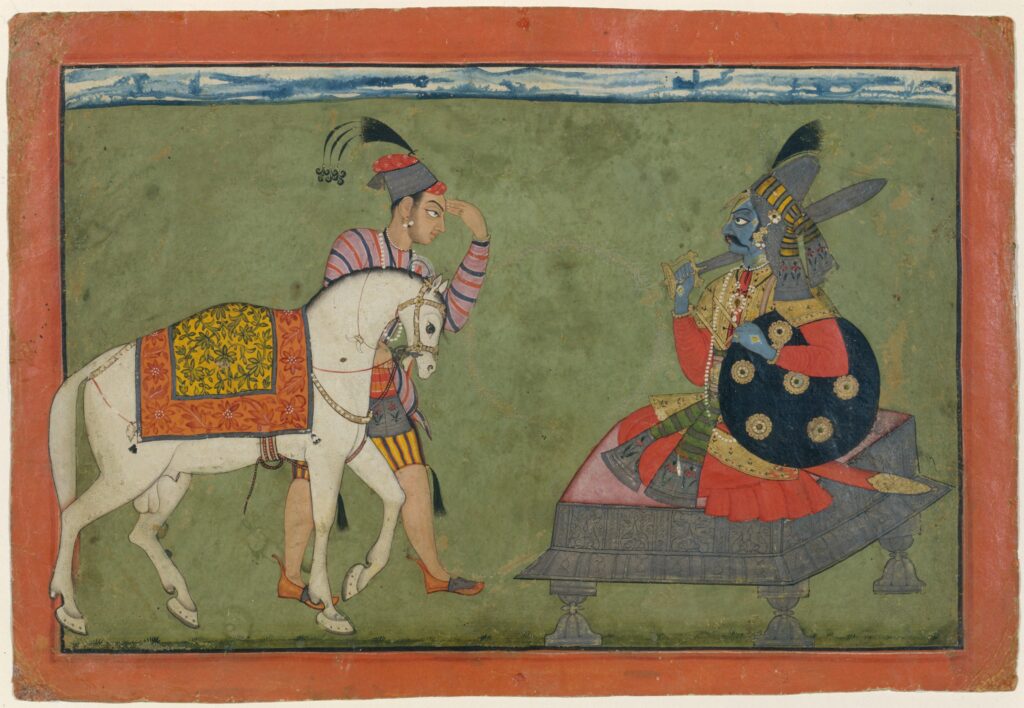
In Hindu eschatology, the tenth and final avatar of Vishnu, known as Kalki, is prophesied to appear at the end of the Kali Yuga (the current cosmic age) riding a magnificent white horse. This divine steed is no ordinary animal but a being of exceptional qualities, chosen specifically to carry the world’s savior during his mission to vanquish evil. According to the Puranas, particularly the Kalki Purana, this horse possesses supernatural speed, enabling Kalki to travel swiftly across the world to eliminate wrongdoers and restore dharma (cosmic order). The white horse of Kalki carries profound symbolic significance, representing purity amidst corruption, divine intervention in human affairs, and the unstoppable flow of cosmic time. Some scholars note intriguing parallels between Kalki’s white horse and similar apocalyptic equines in other world traditions, such as the white horse in the Book of Revelation, suggesting a cross-cultural archetype of divine judgment accompanied by sacred white steeds.
Hayagriva: The Horse-Headed Avatar
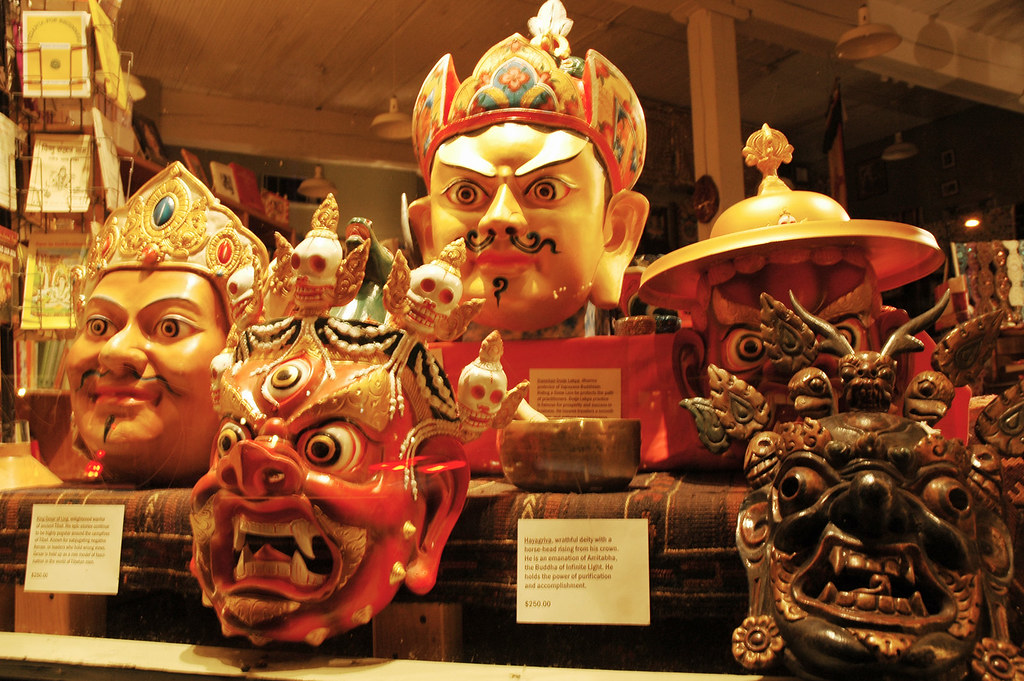
Hayagriva represents one of the most direct connections between divinity and equine form in Hindu mythology, manifesting as an avatar of Vishnu with a horse’s head atop a human body. The name “Hayagriva” literally means “horse-necked” in Sanskrit, and this unique deity embodies the perfect union of human intelligence and equine strength. According to various Puranic accounts, Hayagriva emerged to restore the stolen Vedas (sacred knowledge) after they were seized by demons, making him the divine protector of wisdom and sacred learning. His horse head is typically depicted as white or golden, with a flowing mane and large, expressive eyes symbolizing perfect perception and insight. In South Indian tradition, particularly in Tamil Nadu and Andhra Pradesh, Hayagriva holds special significance for scholars, students, and seekers of knowledge, with dedicated temples where worshippers pray for academic success and intellectual clarity. The figure of Hayagriva demonstrates how the sacred white horse transcends the role of divine mount to become fully integrated into divine identity itself.
The Ashvamedha Ritual: Sacred White Horse Sacrifice
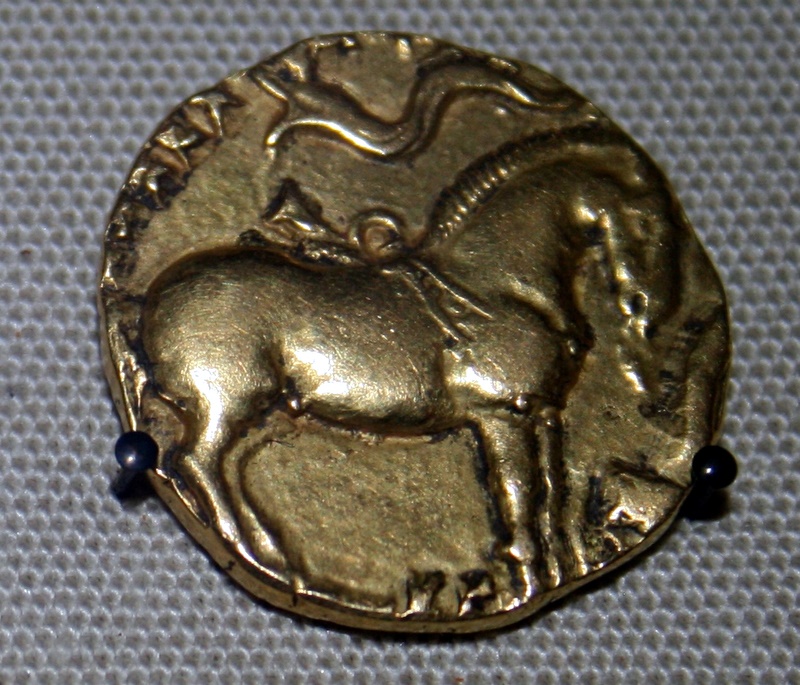
Perhaps the most controversial yet historically significant manifestation of the white horse’s sacred status in Hindu tradition was the Ashvamedha Yajna or horse sacrifice ritual. Described in detail in the Vedic texts, this elaborate royal ceremony centered around a flawless white stallion chosen for its physical perfection and symbolic purity. The horse was released to roam freely for one year, accompanied by armed warriors who protected it and observed its journey. Any territory the horse entered without opposition was claimed by the sponsoring king, making the ritual as much a political declaration as a religious offering. At the end of the year, the horse was brought back for an intricate sacrificial rite involving hundreds of priests, a series of symbolic acts, and a ritual connection between the vitality of the horse and the sovereign power of the king. Though the physical practice of the Ashvamedha faded by the early medieval period, it remains a powerful window into how the white horse symbolized not only sovereignty and cosmic order but also the divine legitimacy of kingship. The ritual’s scale and the central role of the white horse underscore the profound spiritual and sociopolitical significance horses held in ancient Hindu civilization.
Dadhikravan: The Divine War Horse
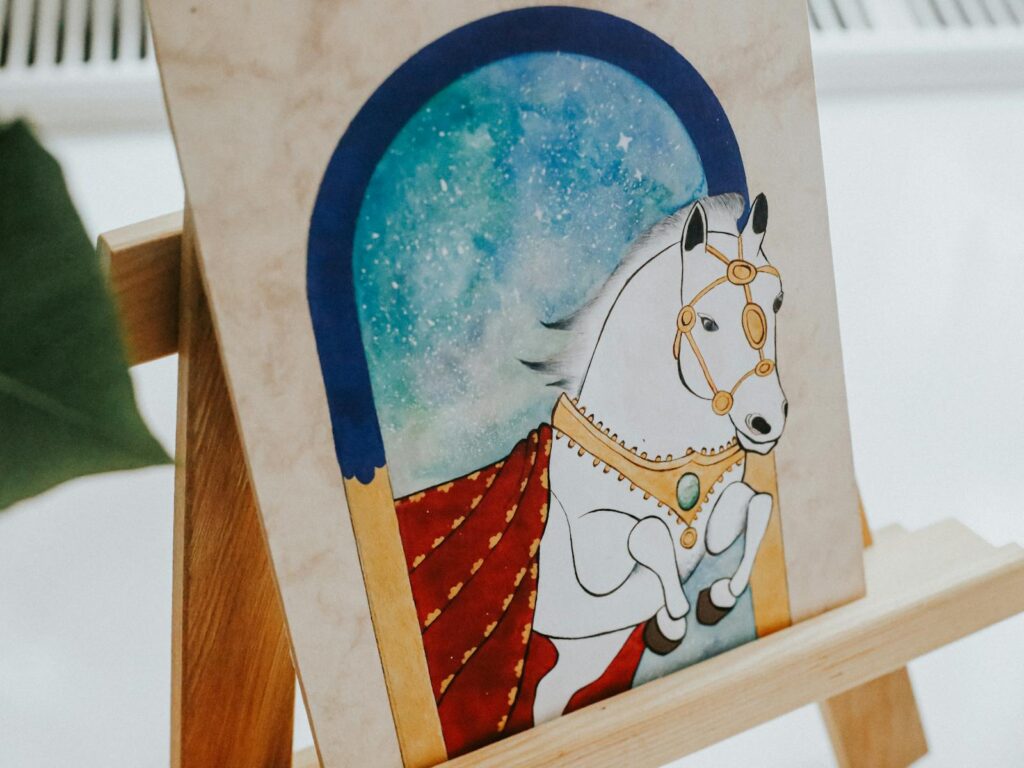
The Rigveda contains hymns dedicated to Dadhikravan, a divine white horse associated with victory in battle and the spread of benevolent forces. Described as swift as thought, this celestial steed symbolizes the ideal warrior mount—combining intelligence, power, and unmatched speed. Vedic verses celebrate Dadhikravan’s ability to race like the wind, traverse both heaven and earth and scatter enemies like morning mist before the rising sun. These hymns imply that merely invoking his name could bring success in warfare and divine protection from harm. Some scholars interpret Dadhikravan as a personification of the morning sun or dawn, linking him to the cyclical renewal of cosmic energy. The reverence shown to Dadhikravan offers insight into how the sacred white horse was not merely a mythic symbol, but an object of practical worship—invoked by warriors and kings seeking to embody his victorious and protective essence through ritual and prayer.
Sacred White Horses in Temple Iconography
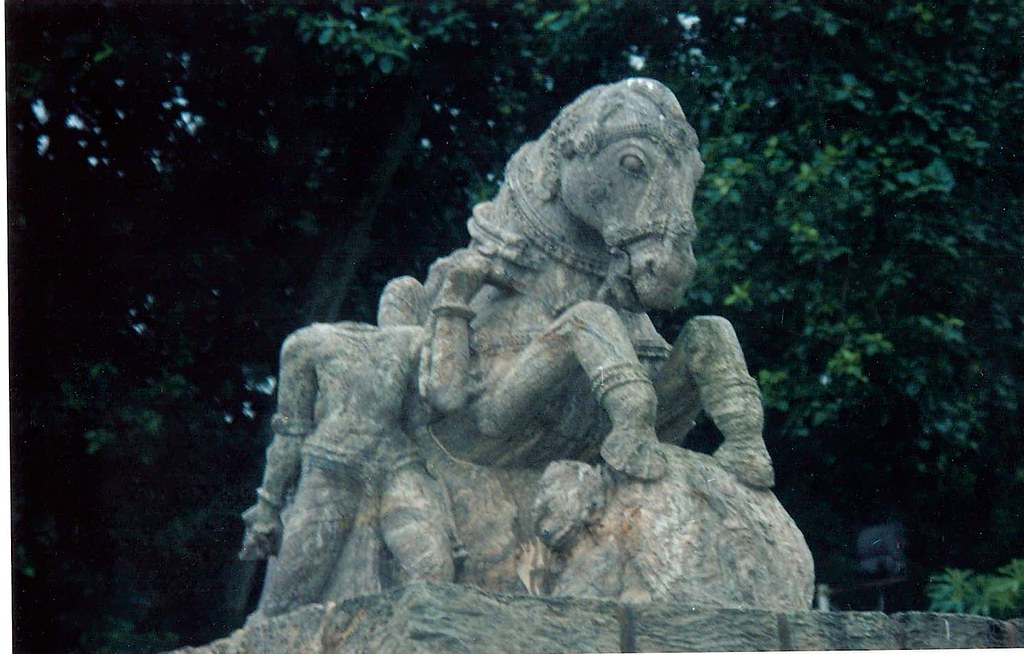
Across the Indian subcontinent, sacred white horses occupy a prominent place in Hindu temple architecture, sculpture, and ritual art—serving as both aesthetic masterpieces and powerful symbols. One of the most striking examples is the Sun Temple at Konark in Odisha, conceived as Surya’s celestial chariot drawn by seven elaborately carved stone horses. These monumental sculptures, arranged in precise symmetry, reflect both artistic brilliance and profound spiritual meaning. In South Indian temples, stone horses frequently stand sentinel at entrances or line processional routes, representing divine vehicles (vahanas) believed to carry devotees’ prayers to the gods. Temple chariot festivals (ratha yatras) often feature wooden or metal horses pulling the deities’ chariots through the streets, symbolically ushering divine presence into the heart of the community. The recurring presence of white horse imagery across regional traditions underscores their lasting spiritual importance—as mediators between the human and divine realms and embodiments of cosmic movement, purity, and power.
Symbolism and Attributes of the Sacred White Horse
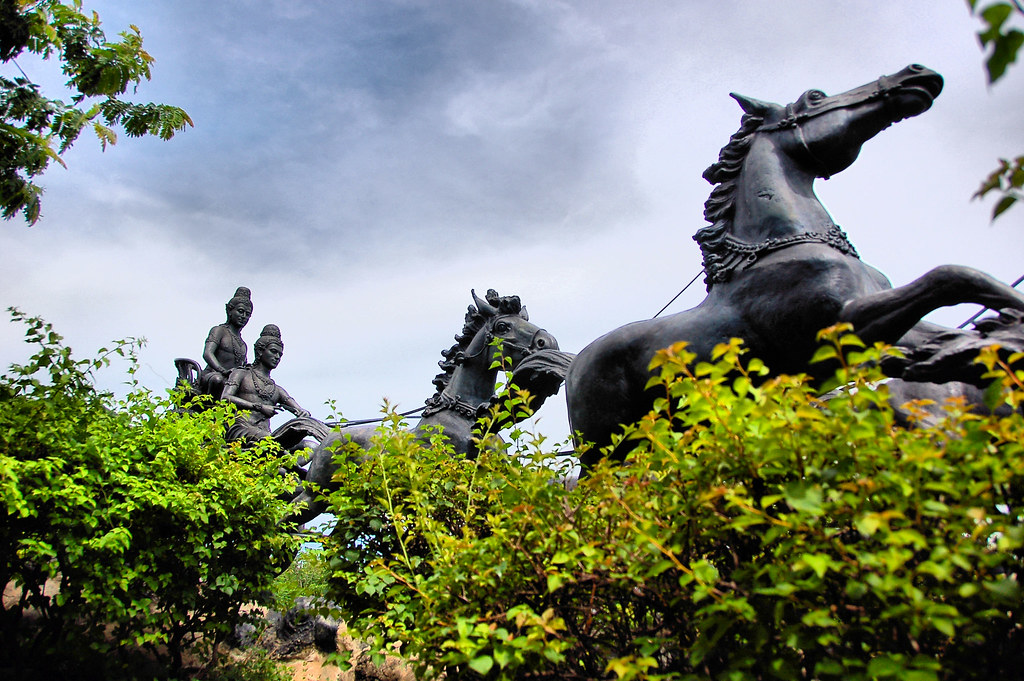
The sacred white horses of Hindu tradition embody layers of symbolic meaning that reach far beyond their roles in mythological narratives. Their white coloration primarily signifies purity, spiritual illumination, and transcendence—qualities closely associated with the divine realm. The horse’s natural speed and power are elevated in mythic contexts, symbolizing swift passage between cosmic realms and the unstoppable momentum of divine will. These sacred steeds often possess supernatural attributes such as flight, immortality, or prophetic insight, further reinforcing their status as beings that transcend the ordinary limits of nature. In tantric and yogic traditions, the white horse is sometimes used as a metaphor for controlled breath or prana, with Surya’s seven horses symbolizing the energy channels (nadis) of the subtle body. The recurring depiction of deities riding white horses underscores the animal’s role as a bridge between worlds—a creature capable of bearing divine consciousness into the material realm while preserving its connection to higher spiritual realities.
Sacred White Horses and Royal Power
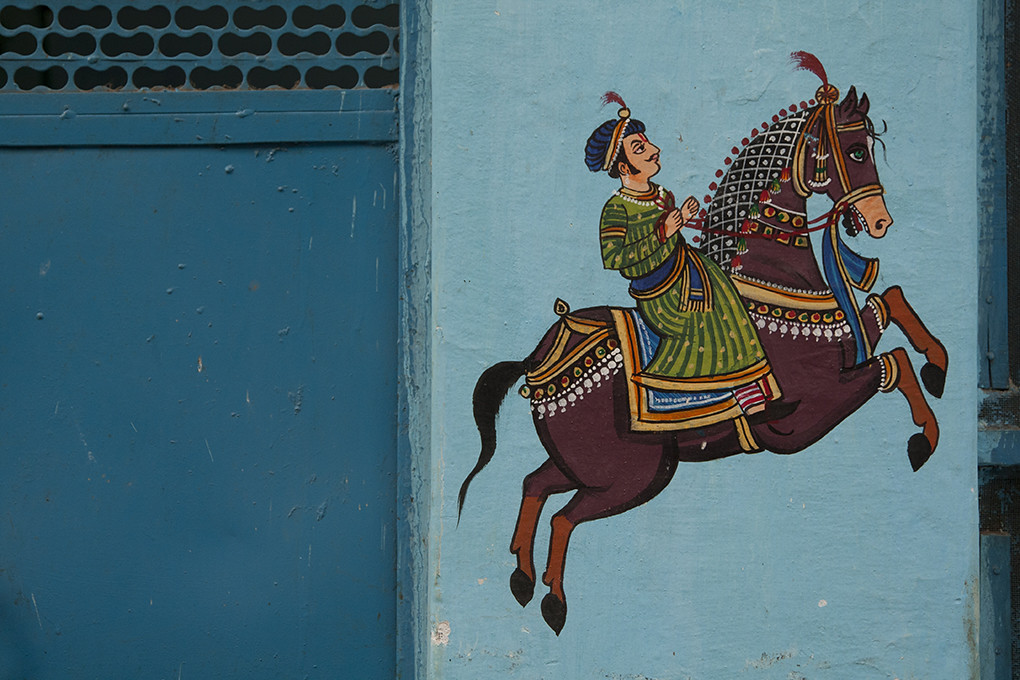
Throughout Indian history, the association between sacred white horses and royal authority cultivated a potent political symbolism that rulers deliberately reinforced. Possessing a white horse—especially one with rare features such as auspicious markings or distinctive eyes—was seen as a sign of divine favor and rightful sovereignty. Historical accounts describe kings dispatching diplomatic missions to acquire white horses from distant regions, with these prized animals receiving exceptional care in royal stables and taking center stage in coronations and state ceremonies. Rajput warriors of medieval India placed particular importance on horse culture, prominently featuring white horses in their royal iconography and martial traditions. Even after the literal practice of the Ashvamedha ritual declined, symbolic versions persisted, with rulers staging ceremonies involving white horses to reaffirm their alignment with the Hindu cosmological order. During the British colonial era, many princely states preserved ceremonial white horse regiments adorned with royal insignia—demonstrating how this ancient symbolism evolved with political shifts while maintaining its deep-rooted connection to sovereignty.
White Horses in Hindu Folk Traditions
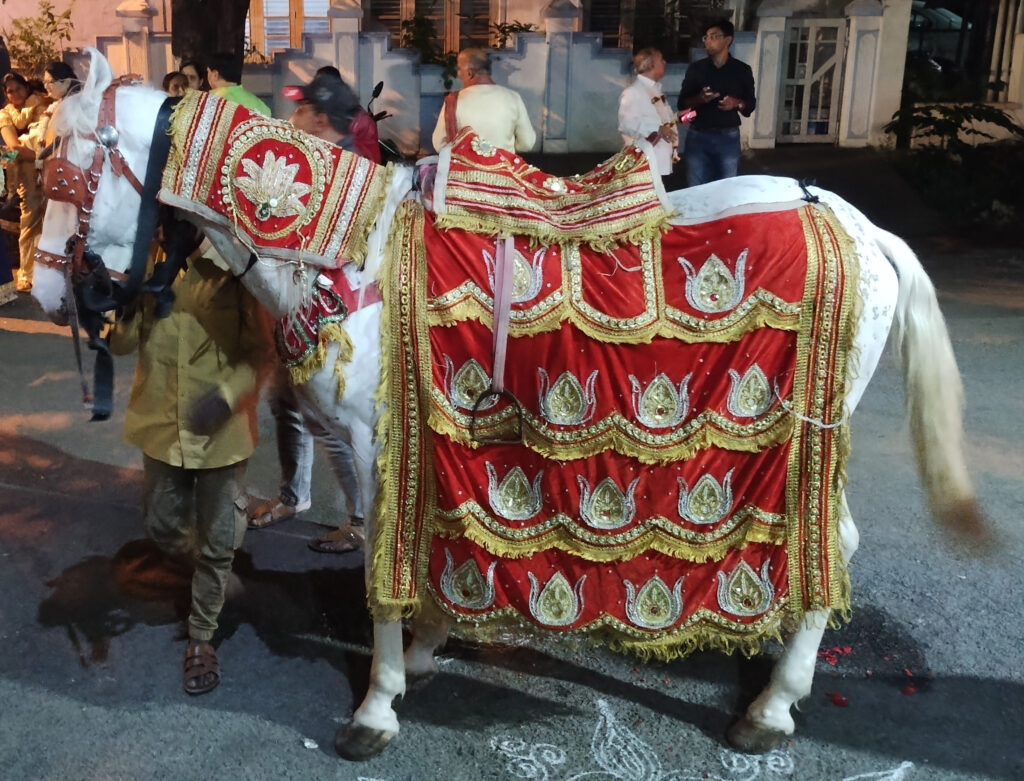
Beyond formal religious texts and royal traditions, sacred white horses play an integral role in Hindu folk practices, regional celebrations, and cultural expressions across diverse communities. In rural Rajasthan, the worship of the folk deity Baba Ramdev often incorporates white horse imagery, with clay horse figurines used as offering vessels or temporary shrines. In South India, numerous village goddess traditions feature ceremonies in which devotees craft decorative horse effigies from various materials as votive offerings for wishes fulfilled. In the Marathi folk performance tradition of Gondhal, ritualized dance movements sometimes mimic divine white horses, believed to temporarily channel their protective energies into the community. During weddings in several North Indian communities, the groom traditionally arrives on a white horse, symbolically connecting the marriage ceremony to ancient divine unions and royal customs. These grassroots expressions demonstrate how the sacred white horse transcended elite religious contexts, becoming embedded in everyday spiritual practice. Local communities adapted its symbolism to meet their specific cultural and spiritual needs.
Contemporary Reverence for Sacred White Horses
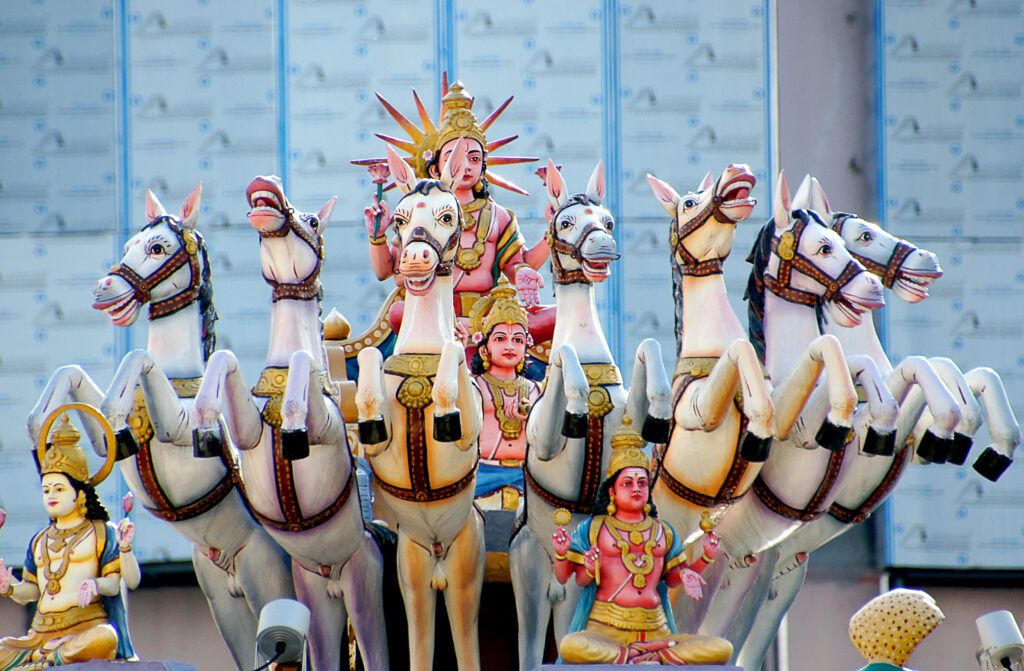
In modern Hindu practice, the veneration of sacred white horses continues in adapted forms that reflect changing circumstances while preserving core symbolic meanings. The Brahma Temple at Pushkar, one of the few temples dedicated to the creator god, upholds a tradition of housing a white horse statue that receives special offerings during festivals, symbolizing a connection to the cosmic origins of the sacred equine. Growing environmental and animal welfare awareness has influenced how some communities honor this tradition, with the preservation of rare white horse breeds becoming a spiritual act that links contemporary conservation with ancient reverence. Meanwhile, digital and cinematic portrayals of Hindu deities often highlight their white horse mounts with striking visual effects, introducing younger generations to these sacred symbols through modern media. Hindu diaspora communities around the world also incorporate white horse imagery in temple decorations and festival processions, keeping this aspect of their spiritual heritage alive in diverse cultural contexts. These contemporary expressions reflect the remarkable adaptability of the sacred white horse tradition, allowing it to remain relevant in every era while preserving its essential spiritual significance.
The sacred white horses of Hindu mythology represent far more than divine mounts—they embody cosmic principles, spiritual aspirations, and the bridge between the material world and transcendent reality. From their dramatic emergence in creation myths to their enduring presence in modern worship, these divine equines gallop through time, carrying profound symbolic meaning for generations of believers. Whether manifesting as Uchchaihshravas rising from the primordial ocean, Surya’s chariot horses maintaining the rhythm of cosmic order, or Kalki’s apocalyptic steed heralding universal transformation, these sacred beings continue to inspire awe and devotion. As living symbols of purity, power, and divine consciousness, the white horses of Hindu tradition remain essential to a mythological landscape that continues to shape spiritual understanding and cultural identity across the Indian subcontinent and beyond.

